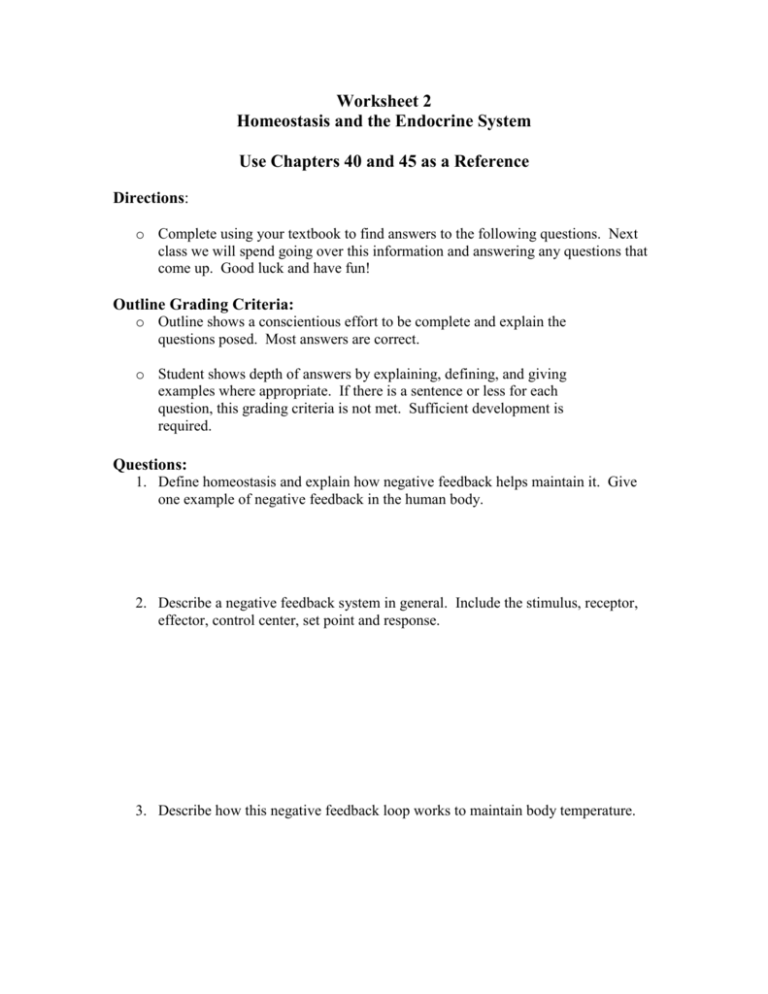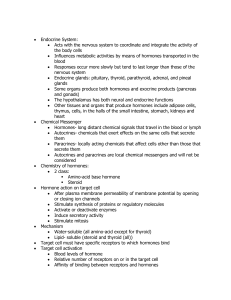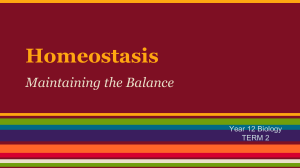Worksheet 3
advertisement

Worksheet 2 Homeostasis and the Endocrine System Use Chapters 40 and 45 as a Reference Directions: o Complete using your textbook to find answers to the following questions. Next class we will spend going over this information and answering any questions that come up. Good luck and have fun! Outline Grading Criteria: o Outline shows a conscientious effort to be complete and explain the questions posed. Most answers are correct. o Student shows depth of answers by explaining, defining, and giving examples where appropriate. If there is a sentence or less for each question, this grading criteria is not met. Sufficient development is required. Questions: 1. Define homeostasis and explain how negative feedback helps maintain it. Give one example of negative feedback in the human body. 2. Describe a negative feedback system in general. Include the stimulus, receptor, effector, control center, set point and response. 3. Describe how this negative feedback loop works to maintain body temperature. 4. Describe a positive feedback system in general. Include the stimulus, receptor, effector, control center, set point and response. 5. Explain how positive feedback regulates childbirth. 6. Why would life on land present more difficulties in maintaining homeostasis than life in the water? What made it evolutionarily advantageous or organisms to colonize dry land? 7. Explain HOW homeostasis depends on the endocrine system. 8. Define the term hormone and give the general function: 9. Why did the need for hormones and an endocrine system arise with multicellular organisms? 10. Define/describe what a signal – transduction pathway is: 11. The endocrine system does not have any ducts, so describe how hormones travel from the secreting gland to the target cell. Why don’t hormones act on all cells in the body? 12. How do hormones work on target cells that have extracellular receptors? 13. How do hormones work on target cells that have intracellular receptors? 14. What is the difference between the exocrine and endocrine systems? 1. What gland secretes the following hormones and what is their function in the body? a) glucagon b) insulin c) thyroxine d) androgens e) epinephrine f) norepinephrine g) ADH – anti diuretic hormone h) Oxytocin i) Prolactin j) Growth hormone k) Calcitonin l) Parathyroid hormone 15. Explain how the hypothalamus is related to the anterior and posterior lobes of the pituitary gland. 16. Describe the function of releasing hormones of the hypothalamus.











